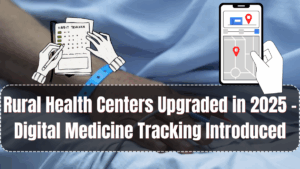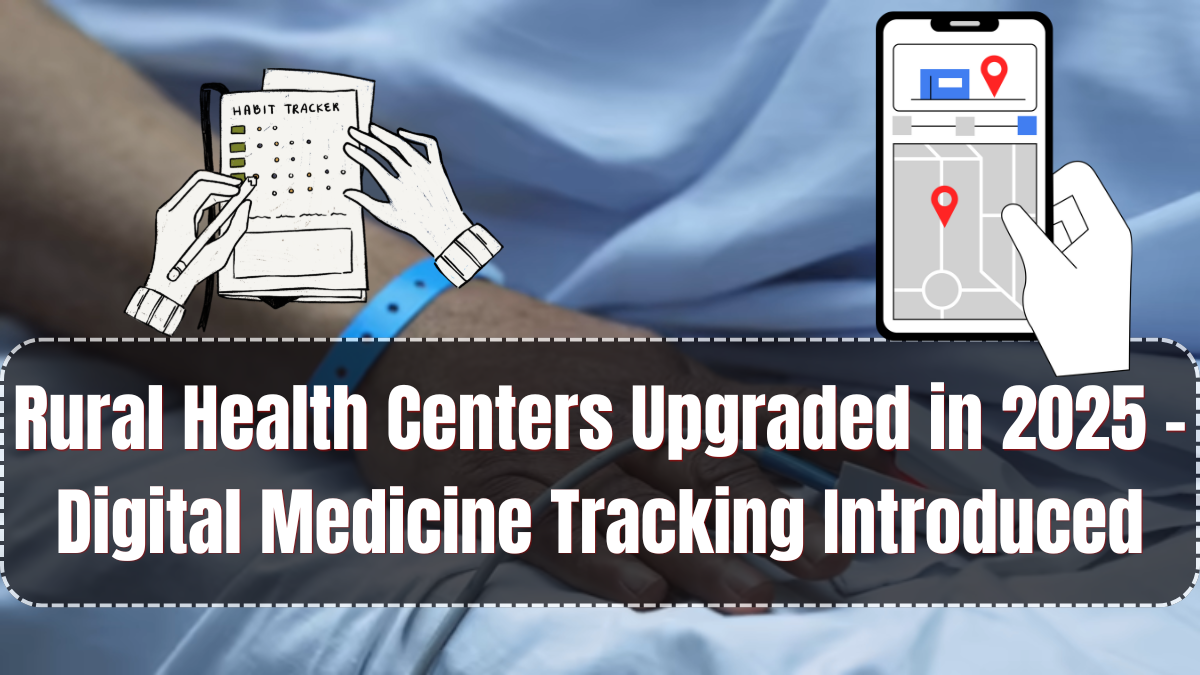In a major step toward improving public healthcare delivery, the Government of India has announced a large-scale infrastructure and technology upgrade across rural health centers in 2025. Under the newly expanded Zilla Parishad (ZP) health scheme, over 1.5 lakh Primary Health Centres (PHCs) and Sub-Centres (SCs) in villages will now operate with real-time digital medicine tracking, improved diagnostics, and upgraded medical facilities.
The rural health 2025 initiative focuses on strengthening last-mile delivery of essential medical services, ensuring medicine availability, reducing patient wait times, and improving transparency in government dispensaries. This upgrade is especially important in remote, tribal, and underserved regions where healthcare access has historically been limited.

What Is the Rural Health Upgrade Initiative?
The Ministry of Health and Family Welfare (MoHFW), in partnership with state governments and Zilla Parishads, launched the Rural Digital Health Mission 2025 to digitally empower rural health infrastructure. The aim is to:
-
Digitize medical stock and inventory
-
Track patient history and prescriptions in rural clinics
-
Prevent stock-outs of life-saving medicines
-
Enhance diagnosis using teleconsultation and portable diagnostics
-
Monitor staff attendance, equipment usage, and vaccine supplies
This upgrade aligns with the Ayushman Bharat Digital Mission and is fully integrated with India’s broader National Digital Health Ecosystem (NDHE).
Key Features of the 2025 Rural Health Upgrade
The rural health 2025 scheme introduces several game-changing improvements in how health services are delivered at the village level.
1. Digital Medicine Inventory System (DMIS)
Every PHC and SC will now maintain a real-time inventory of medicines through barcode scanning and automatic updates. This ensures that essential drugs like paracetamol, antibiotics, ORS, and insulin are never out of stock. District medical officers can view and monitor stock status remotely.
2. Patient e-Records
Rural dispensaries are now equipped with tablets and basic desktops where health workers can log patient details, symptoms, diagnosis, and medicines dispensed. This creates a running history of each patient’s visits and prevents duplication or overuse of medication.
3. Telemedicine Booths
In partnership with medical colleges and urban hospitals, remote villages will have access to teleconsultation booths inside PHCs. Patients can connect with doctors for complex cases and receive prescriptions digitally.
4. GPS Tracking of Mobile Health Units
Each district will deploy Mobile Health Vans that are GPS-tracked, ensuring they reach the scheduled villages. These vans will offer weekly camps for ANC checkups, eye testing, minor procedures, and basic lab tests.
5. Real-Time Dashboard for Officials
ZP health officers and district collectors can now monitor staff attendance, medicine consumption trends, and patient footfall via centralized dashboards. Alert systems will notify them in case of medicine shortages, absenteeism, or service disruptions.
6. Refresher Training for Health Workers
ANMs, ASHAs, and PHC nurses are being trained to use basic digital tools, enter data in regional languages, and explain e-prescriptions to illiterate patients.
Areas Covered Under the Upgrade
The 2025 upgrade will be rolled out in three phases, prioritizing regions based on remoteness and healthcare demand.
Phase 1 (April–August 2025):
-
Tribal districts in Maharashtra, Madhya Pradesh, Chhattisgarh, and Odisha
-
Border villages in Northeast states
-
High-mortality zones identified under Aspirational District Programme
Phase 2 (September–December 2025):
-
Semi-rural and peri-urban areas with high floating populations
-
Coastal villages and flood-prone health blocks
-
Villages with maternity home backlogs or staff vacancies
Phase 3 (January–March 2026):
-
Well-connected rural regions for optimization and capacity building
-
Model PHCs to act as training and demonstration centers
By March 2026, the government aims to make at least 80% of rural health centers fully digital and medicine-tracking enabled.
Budget and Implementation Support
The central government has allocated ₹9,500 crore for the implementation of rural health 2025, with states contributing additional infrastructure funds. Funding breakdown includes:
-
₹3,000 crore for software and IT equipment
-
₹2,000 crore for telemedicine network setup
-
₹2,500 crore for medicine stock automation
-
₹1,500 crore for health worker training and supervision
-
₹500 crore for mobile health van deployment and GPS systems
The initiative is being coordinated by the National Health Mission (NHM) and monitored via the Public Financial Management System (PFMS) for fund transparency.
FAQs
What is digital medicine tracking in rural health centers?
It is a system that allows PHCs and Sub-Centres to manage medicine stock in real-time using barcodes and online dashboards. It helps prevent medicine shortages and improves accountability.
Will villagers need a smartphone to access health services now?
No. Services are still offered in-person, but health records will now be maintained digitally by the clinic staff. Telemedicine is optional for specialized consultations.
What benefits does telemedicine provide in rural areas?
It allows patients in remote villages to consult with city-based doctors without travel. This is helpful for chronic illness, pregnancy monitoring, and second opinions.
How will this help reduce fake medicine distribution?
Digital tracking ensures that medicines are supplied only through authorized government stock, reducing the chances of fake or expired drugs reaching patients.
Can patients check their health reports online?
As of now, reports can be shared via SMS or printed at the PHC. Full public access portals are expected in the next phase of the rollout.
Click here to know more.
